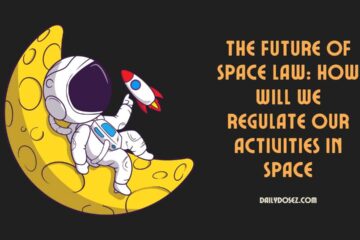Space exploration has always been a captivating endeavor, with humans pushing the boundaries of our existence and venturing into the vast unknown. As technology advances, the dream of living in space is no longer a mere fantasy but a tangible goal.
The International Space Station (ISS) has served as a testament to human endurance and innovation, but the challenges of living in space are vast and complex. In this article, we will delve into the myriad of challenges faced by astronauts and scientists in their quest to establish a sustainable and habitable environment beyond Earth.
Microgravity and Its Effects
One of the most profound challenges of living in space is adapting to a microgravity environment. Microgravity, or the condition of experiencing almost zero gravity, poses several physiological and psychological challenges for astronauts.
Extended exposure to microgravity leads to muscle atrophy, bone loss, and cardiovascular deconditioning. Astronauts must adhere to rigorous exercise regimens, utilizing specialized equipment, to counteract these effects.
Additionally, prolonged isolation in space can have psychological implications, including feelings of loneliness, depression, and altered sleep patterns. Scientists are diligently studying these effects to develop countermeasures, such as artificial gravity systems, to ensure the well-being and long-term health of astronauts during extended space missions.
Radiation Exposure
Beyond the protective shield of Earth’s atmosphere, astronauts are exposed to high levels of radiation in space. Galactic cosmic rays and solar particle events pose serious health risks, including an increased risk of cancer and damage to the central nervous system.
Shielding spacecraft and developing advanced radiation detection and protection systems are ongoing research areas to safeguard astronauts from the harmful effects of radiation. This challenge becomes even more critical when considering future manned missions to Mars, where astronauts will face prolonged exposure to cosmic radiation.
Finding effective shielding materials and developing innovative strategies to mitigate radiation risks are paramount in ensuring the safety of long-duration space travel.
Life Support Systems
Living in space demands self-sufficiency in terms of essential resources like air, water, and food. Developing efficient and reliable life support systems is crucial for sustaining astronauts during extended missions. These systems must be capable of recycling and regenerating vital resources to minimize dependence on Earth.
For example, water recovery and purification systems are vital for ensuring a steady supply of drinking water. Similarly, air revitalization systems must effectively remove carbon dioxide and replenish oxygen levels. Additionally, cultivating food through advanced techniques like hydroponics or aeroponics can provide a sustainable food source in the limited space available.
The development of closed-loop systems that effectively recover and repurpose waste products is also essential. Scientists and engineers are constantly working towards compact, reliable, and robust life support systems to enable long-term human habitation in space.
Supply Chain and Resupply
Space missions, particularly those involving long-duration stays or colonization efforts, require a reliable supply chain. The logistics of sending necessary resources, spare parts, and equipment from Earth to space and maintaining a steady flow of supplies pose significant challenges.
Currently, resupply missions to the ISS are carried out regularly, but for future missions further away from Earth, such as those to the Moon or Mars, the time and cost of resupply become more complex. Reducing dependence on Earth for resupply is essential.
Scientists and engineers are exploring the concept of in-situ resource utilization (ISRU), which involves extracting and utilizing resources from celestial bodies. For example, extracting water from lunar ice or utilizing Martian soil for building materials could significantly reduce the need for resupply from Earth.
ISRU technologies are being developed to ensure sustainable space exploration and reduce reliance on Earth’s limited resources.
Human Adaptation and Team Dynamics
Living and working in the confined spaces of spacecraft or habitats for extended periods can lead to interpersonal challenges among crew members. The psychological impact of isolation, stress, and the demanding nature of space missions can strain relationships and affect mental well-being.
Team cohesion and effective communication become paramount to ensure a harmonious environment conducive to productivity and crew morale. Selecting and training astronauts with the right temperament, emotional resilience, and interpersonal skills is crucial.
Additionally, implementing efficient management strategies and providing psychological support are essential to maintaining a healthy team dynamic in the challenging environment of space.
Conclusion
The challenges of living in space are vast and complex, ranging from the physiological and psychological impacts of microgravity to radiation exposure, life support systems, supply chain logistics, and human adaptation. However, each challenge represents an opportunity for innovation and discovery.
As scientists, engineers, and researchers continue to push the boundaries of space exploration, they are driven by the collective goal of establishing a permanent human presence beyond Earth. By addressing these obstacles head-on, we pave the way for a future where living and thriving in space becomes a reality, expanding our horizons and opening up new possibilities for humanity.
The challenges of living in space are formidable, but the triumphs achieved through perseverance and innovation will shape the future of space exploration and our understanding of the universe.




